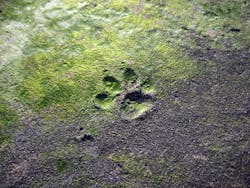Study Suggests Natural Products Are More Effective at Algae Removal
Researchers from the University of Extremadura in Badajoz, Spain, tested to see if algae could be removed using natural coagulants rather than chemical coagulants. Their study suggests that natural products may better counteract algae than chemicals. This is the first major study on the extent to which tannin-based coagulants can effectively remove algae from water.
Algae negatively impacts water affected by runoff and other pollutants. It clogs filters, requires the use of chlorine and wash water, produces bad smells and tastes, and increases the risk of toxins and bacteria in drinking water. Most countries counteract these side effects through water treatment, but the treatment chemicals can cause problems for human health.
The researchers looked at four species of algae that are plentiful in freshwater reservoirs: Chlorella, Microcystis, Oocystis and Scenedesmus. These types of algae can grow rapidly and easily live in harsh environments. Aluminum and other metal salts are often used to remove algae during water treatment, but studies have shown that these chemicals may lead to Alzheimer’s disease, cancer and other serious health problems. As a safer solution, the researchers of this study looked at products made from natural materials such as tree bark and wood.
The results of this research showed that several natural products were more effective at removing algae from surface water than aluminum sulfate, a chemical frequently used for this purpose during water treatment. The wood-based coagulant TANFLOC removed 94% of the algae during lab tests, making it the most effective product tested. Additionally, the larger the dose of the product, the more effective it was in treating the water.
The researchers concluded that TANFLOC is more effective than other plant-based products or the traditional chemical treatment, even when the water contained high concentrations of algae. A larger dose had a greater effect, and the treatment worked best at a water pH below 8.
“The authors introduce a simple technology for the removal of algae from water samples that may be a major boon in providing clean water in the global south,” said Phycologia Editor-in-Chief David Garbary. “It provides an approach that can utilize local materials that are completely organic and sustainable.”
The article was published in the journal Phycologia. Full text of the article “Microalgal Removal with Natural Coagulants,” Phycologia, Vol. 55, No. 6, 2016, is available.
Source: Phycologia
